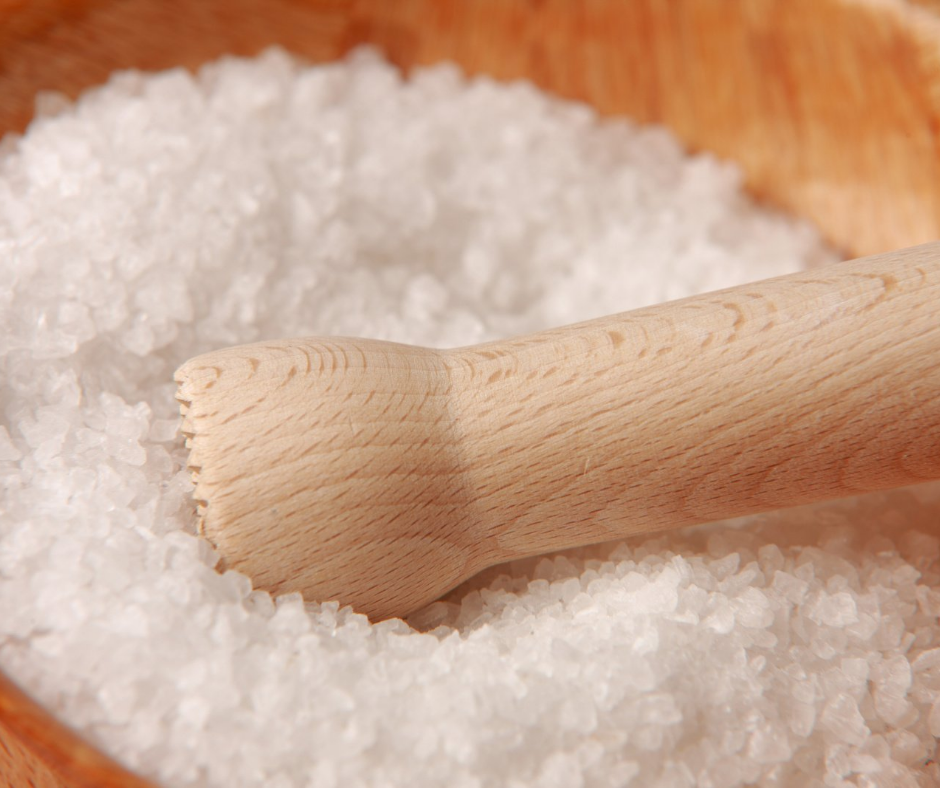We get a lot of questions about whether or not Epsom salts are safe to use in septic tanks and biocycle systems. We are here to reassure you, that Epsom salts are perfectly safe – in the right quantities!
If you’re prepared to put on your science hat, this paper outlines why this is so. If you lack the time or interest to read an academic paper, below is a quick summary in layman’s terms.
Epsom salts are completely harmless to septic tank systems unless used in huge volumes – and we mean HUGE. In fact, grey water runoff that contains Epsom salts enhances plant life in the soakage trench area.

Is Epsom Salt Harmful to Bacteria?
There is a popular misconception that Epsom salts are harmful to bacteria present in septic tanks. The role of bacteria is essential, as it “digests” solids, breaking the majority of it down into clean liquid waste. This liquid then filters into the soakage trench area.
There are actually three types of bacteria present in septic tanks: aerobic bacteria, anaerobic bacteria, and faecal coliforms. As its name suggests, aerobic bacteria need oxygen to survive. This is the main type of bacteria that breaks down solids in a septic tank. Anaerobic bacteria doesn’t need air, and it is more resistant to environmental changes as well. Faecal coliforms, which come from humans is also present. This can contain pathogenic bacteria, such as viruses, fungi and parasitic worms. A properly functioning septic tank will remove these pathogens prior to reaching the soakage trench area, however. To reiterate, Epsom salts in correct quantities are not harmful to any of these bacteria. So, let’s talk about size.
Size Matters
A typical bath holds around 200 litres of water. A two-person spa holds around double that amount, at 400 litres.
The Epsom salt concentration that starts to show antibacterial properties, i.e., levels that will harm a septic tank, are 2000 grams per litre.
So, for a typical bath of 20L, the Epsom Salt antibacterial amount is 2000g x 200L. That’s 400,000g or 400kg. In other words, you would need 400kg of Epsom salt in your bath for it to adversely affect the bacteria in your septic tank! Size matters because this quantity is double the amount that commercial float centres use in their flotation chambers and pools!
So How Much Should I Use?
The suggested Epsom salt quantity to use would be 200 g (or half a container of BathCalm Bath Soak). For a two-person spa, 400 g, or a whole container of BathCalm is perfectly safe to use.
BathCalm’s Epsom salt concentration is 2000 times smaller than the Epsom salt concentration that starts to show antibacterial properties. Epsom Salts are Safe to Use with Septic Tanks and Biocycle systems!

What About Other Salts?
Epsom salts are Magnesium sulphate heptahydrate. Pink Himalayan and regular sea salt however are 95-99% sodium chloride, with the rest made up of trace minerals. It’s the extra trace minerals in Himalayan salt that make it that gorgeous pink colour.
The sodium element doesn’t pose too much of a problem, but the chloride does – it’s a bacterial assassin. Salt has well-known anti-bacterial properties from the salt gargle that kills cavity-causing bacteria in your mouth, to corning or brining meat to kill harmful bacteria. While these uses are beneficial to us, the same mechanism is very harmful to your septic system as Sodium Chloride can kill the microbial activity necessary to break down the effluent. It is also harmful to the soakage trenches of septic systems by changing the structure of the soil making it impossible for wastewater to drain through. It’s best to stay away from those types of soaks if you have septic or biocycle systems. There are some great looking bath soaks on the market that are just plain sea salt too, so it’s vital that you check the label before purchasing!
It’s all About the Balance Baby
Another factor for healthy tank bacteria, is a correct pH level, i.e., the alkaline and acidity levels. Bio-Sol states that pH levels need to range between 6.5-7.5 in septic tanks. This pH level is vital to maintain healthy bacteria levels for the septic system to work effectively.
It should be noted that Epsom salts are pH neutral and have no effect on pH levels. This is another reason why Epsom salts are safe to use with septic tanks and biocycles.
Happy Guilt-Free Soaking!
And there you have it. Epsom salts are safe for septic tanks and biocylces, Himalayan and regular salt are not. We hope this information has been helpful for you to make an informed decision on what type of bath products you choose to buy.
Happy guilt-free soaking!
No comment yet, add your voice below!